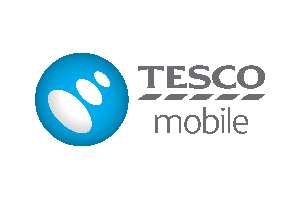Making everyone instant experts.
Deliver customer self-serve best practices, supercharge your first line agents and ensure your back office teams do the right thing, every time.
The biggest challenges to high quality, cost-effective customer service?
What companies sell is getting a lot more complicated:
- Consumer products are now often part of a wider ecosystem (e.g. smartphones connecting to Smart TVs, soundbars and routers)
- Support is available on multiple customer platforms (websites, social media, apps, telephony)
- Products are frequently bundled with other services (e.g. insurance, savings and mortgages in one account)
- Things are always changing, with new apps and platform updates occurring near constantly.
Keeping on top of this is difficult and making sure all channels are up to date in an engaging way is a never-ending demand.
Customers want answers to a wide range of demands ranging from highly technical (“how do I stream an MKV file to my TV?”) to extremely low tech (“how do I check my balance”) and from highly transactional (“I want to increase my insurance cover”) to non-traditional (“what’s your carbon footprint?”).
It is eye-opening learning what customers actually ask, and this is even more true in digital channels where support channels are on-hand 24×7.
Many businesses look at agent call classification to understand the voice of customer. This is deeply flawed for many reasons (ask us why!) and results in many companies not servicing many customer demands.
Some customers will want to go online.
Some customers will want to check their APN settings.
Same thing, different audience.
Many in-house knowledgebases, troubleshooters and processes are created by technical teams and not suited for customer-facing channels. Omni-channel support demands omni-channel thinking and a focus on education as well as instruction.
The expertise your agents and customers need to serve their needs is often at the furthest point from the point of engagement – locked away in multiple inaccessible process documents, third line tech support or the repair centre, and legacy service platforms.
To provide a cost-effective quality service, customers should have a direct line to the answers and servicing capability they need.
With many channels to serve the customer and many platforms (e.g. AI chat, call centre CRM tools, retail systems, website CMS tools, legacy servicing platforms) ensuring that a high quality customer journey is provided and the right, compliant process followed across all customer touchpoints is difficult.
Making sure every touchpoint, including the long-neglected email and post channels are part of the transformation is essential to creating a holistic quality experience.
Even the richest knowledgebases, troubleshooters and slickest digital processes are worthless if the customer or agent cannot find them.
Instead of natural language search, many companies still use index-based searches that rely on customers using the exact wording to find answers.
Or companies provide AI chat but it is not hooked up to any servicing capability or single source of truth.
This is fundamental – how can customers self-serve if they cannot find the answers?
How do you make AI chat a practical solution rather than a vanity project or an expensive exercise in duplicating support capabilities that already exist?
The pain felt by companies is real and a significant drain on profits and customer loyalty
Support call time is getting longer as agents struggle to diagnose issues across several products (many of which are not the company’s). It can lead to several calls, multiple hand-offs, inconsistent advice across channels, and even the customer walking away and compliance issues.
Accounts are being closed, products are being returned with no-fault and many avoidable repairs are entering the reverse logistics chain for no need. The cost of this is eye-watering.
Investments in digital support platforms such as AI chat do not provide adequate returns with either the customer unable to find answers or the conversation often ending up with “we’ll pass you to an agent”. End result? Limited call avoidance and low customer satisfaction.
The cost of brute-forcing consistent advice across all channels by duplicating knowledge across platforms is high. Conversely, it’s also needlessly expensive to channel many customer journeys into higher-skilled teams for servicing. You want to empower all customer touchpoints via a single source of truth, but how?
There are multiple hidden costs too
Retail and call centre agents are spending excessive time on low or negative value transactions instead of adding value to accounts. Why should an agent spend 8 minutes on a change of address call when the customer would be happier self-serving on-line and the agent could be spending time on upgrades?
Time and time again it has been shown that customers are willing to use digital channels for many user journeys, but the implementation has let them down and the brand suffers.
Customer service languishes in back office, where multiple handoffs and long call times damage the customer experience.
If done right, digital transformation is a rare opportunity to both delight the customer and save costs, but as history shows, navigating the right path requires experience and the right toolset.
Events such as Covid-19 have shown that reliance upon a single support channel and inadequate expertise across all channels has hamstrung some companies in terms of customer response. Companies need to be nimble and respond to customer demands, no matter where they arise.
Omnichannel single-source-of-truth care can be massively effective at handling customer service traffic, but only if done properly.
Let us show you how; LucidCX has over 17 years of experience of making everyone instant experts and is entrusted by global brands to provide high quality care at low cost in a seamless way.
Ask for a demo – we’d love to talk to you.









